Thankfully, sore necks aren’t a symptom of COVID-19. Because my wife and I have doozies—not from being sick, but staring up towering tree trunks in Sequoia National Park.
Indeed, “Don’t forget to look up!” is sound advice for anyone visiting this off-the-beaten-path park in the Sierras just south of Yosemite.
With wildfires and pandemic protocols commanding center stage in the Golden State, my wife and I still decided to take a national park road trip, after dropping our daughter off at college at CalPoly in San Luis Obispo. So, in September, we point our Honda Pilot northeast after saying our tear-choked goodbyes at our masked daughter’s dorm and head through the smoke to the land of big trees.
Winding up the 85-year-old Generals Highway just south of the 220,000-acre Creek Fire, we cross the Kaweah River and climbed up the Sierra foothills until we started seeing them—first one or two by the road, causing us to get out and take photos, and then groves of the gargantuan beasts. Our first stop: General Sherman, the largest tree in the world, by volume, measuring 275 feet tall and 36.5 feet in diameter.
While Sherman is 2,200 years old, the oldest sequoia is a whopping 3,200. We’ve all seen some things this year, from unprecedented wildland fires and COVID-19 curves to the larger cultural reckoning on racial justice, to political shenanigans and more. But these things—these natural pillars—have lived through Christ’s birth, the discovery of the Americas and the rise of both Beatles and Bieber.
The rings on a nearby cross-section show that it had survived 80 fires in its lifetime (they’re actually surprisingly fire-resistant, with thick outer bark insulating their interiors and minimal sap to burn).
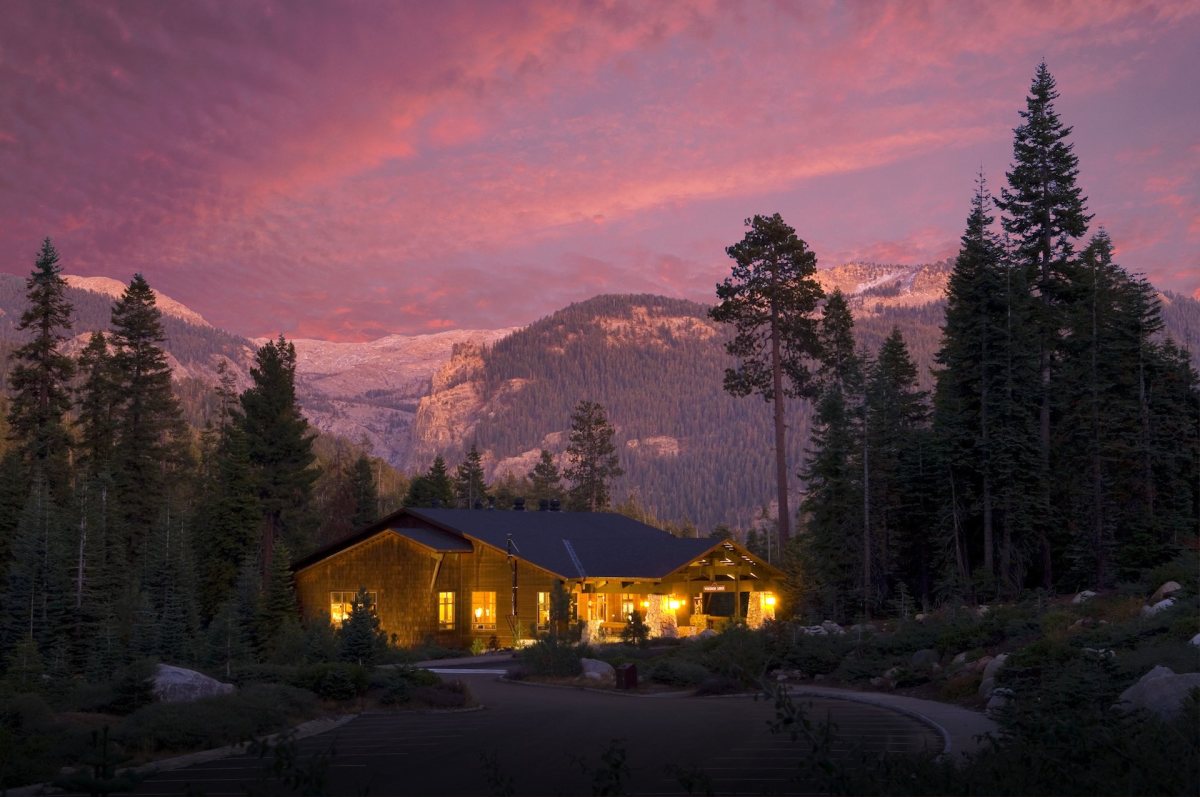
This year, the park faced hurdles as big as its trees to get open, from the worst wildfire season on record to the coronavirus shutdown. But it did, and so did its main lodge, the Wuksachi, a stone-and-cedar masterpiece at 7,200 feet in the heart of the park and soaring Sierras. When firing on all non-COVID cylinders, it has 102 rooms, a 90-seat restaurant with sequoia-sized stone fireplace and windows, cocktail lounge, retail shop and more.
The concessionaire, Delaware North, pulled out all the stops to get it open with pandemic protocols. Staff removed such “high-touch” items as alarm clocks, coffee makers, hairdryers, literature, pens and paper, and even throw pillows. They also eliminated housekeeping (simply place your towel outside on the floor), baggage handlers and room charges; you just pre-pay at check-in.
Our room is in the Stewart Cabin lodge, named after George Stewart, “the father of Sequoia National Park.”
For dining, patrons order easy-to-prepare meals at an outside window—like braised chicken and mashed potatoes, with canned margaritas—and eat on the deck or back in their room. We choose outside amidst the natural grandeur. Braving both virus and furnace to get here, other diners at tables spaced like sequoias feel the same.
Everyone, it seems, knows we’re in whacko times, but came here anyway for a sanity reprieve amongst the sequoias. Nature, after all, is the best teacher. “The clearest way into the Universe is through a forest,” naturalist John Muir penned when he visited here in 1875. Other sayings serve as similar testimonials to the area’s sequoias: “I never saw a discontented tree”; “One day’s exposure to mountains is better than a cartload of books”; and, “The trees seemed to be hushed and thoughtful…I walked awe-stricken among them, meeting nobler trees where all were noble.” He once even told Ralph Waldo Emerson, “You are yourself a sequoia.” We can all thank Muir for the creation of both Yosemite and Sequoia national parks in 1890 (with adjacent Kings Canyon, pictured below, added in 1940).
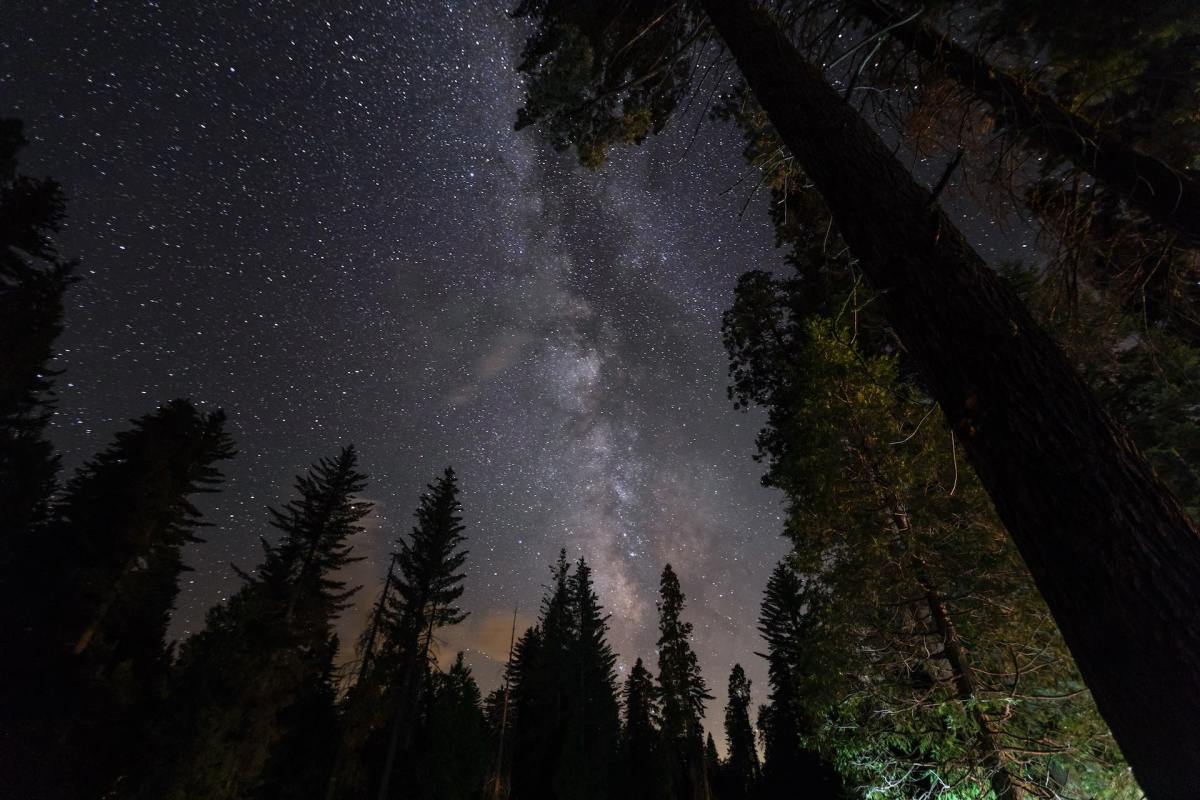
Fires and Virus
If Muir was fired up over preserving the area, fires themselves actually preserve it as well. Signposts regularly point out their importance, helping sequoias grow by letting their seeds root. (Even trees like Sherman only need three feet of soil to root.) And fires are frequent here; more so, even, than the rest of the drought-riddled state.
“It’s been over six years since we’ve had a smoke-free summer here,” says lodge general manager Brett Archer.
And managing their repercussions this year was just as problematic as dealing with COVID concerns.
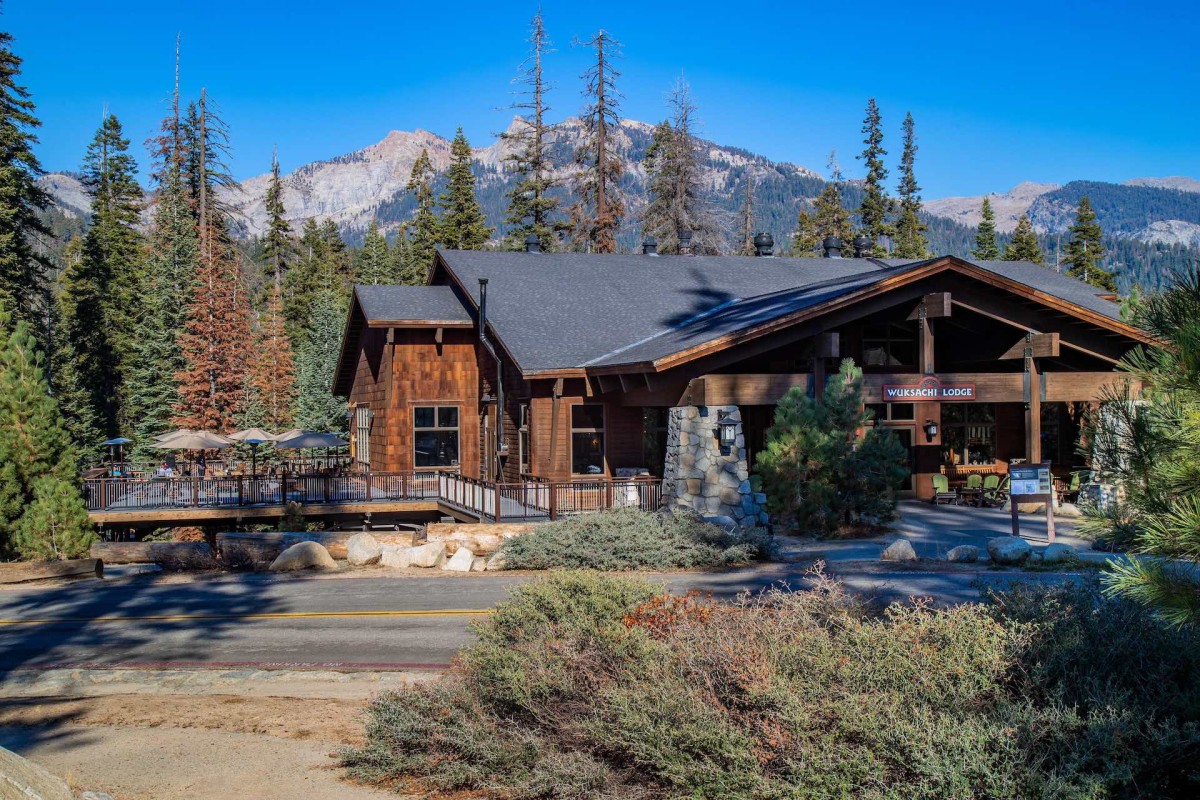
“We got a great playbook handed to us by Delaware North and were able to implement it pretty easily,” Archer says, touting everything from hand-sanitization stations to the installation of plexiglass shields. “Once we got our COVID protocols in place, it was just some day-to-day operations we had to deal with. With fires, there’s a lot more unpredictability.”
The park closed on March 18 for COVID-19, and again on June 19 for fires. It would close again a few days after we left for fires on Sept. 15.
Archer says he was the only person at the lodge for a month or so doing the COVID-19 shutdown. “Me and Bigfoot,” he says.
Still, its visitation numbers have actually been pretty strong up with all these monkey wrenches. Over the summer, he says, the lodge was at 85-90 percent occupancy, “and it would have been 100 percent were it not for the fires. So for lodging we did pretty well. And September was looking strong until the smoke hit.”
And its guests, like us, are glad for everything they’ve done to accommodate.
“Our guests are super happy that we’re open and able to help them get outside,” Archer says.
Exploring the park
In the morning, like Groundhog Day, we awake to another haze of gray. But the wood we visit pokes up a little higher than your typical woodchuck.
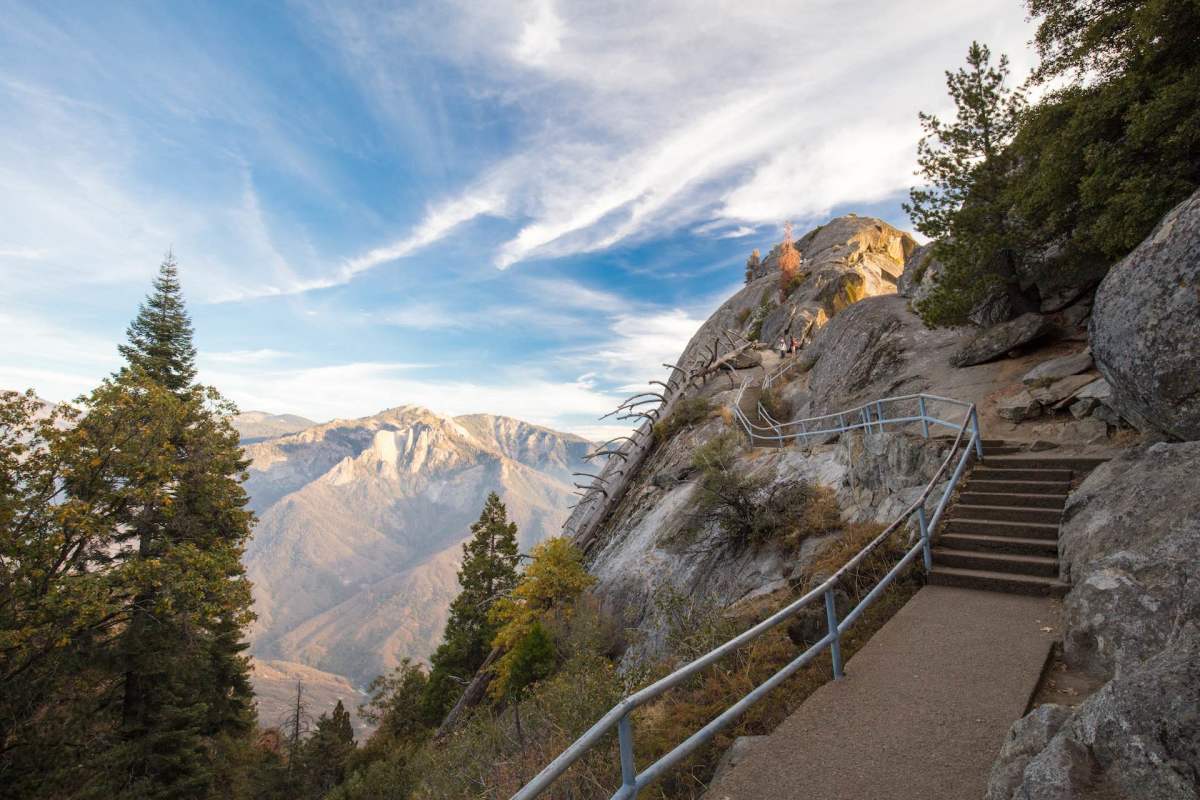
First, we head to Moro Rock, a commanding, 1,000-foot granite promontory requiring a rail-lined, adrenaline-addled scramble up a staircase to the top of a Yosemite-esque monolith. Putting the threat of the coronavirus into perspective, it offers views—if we could see them through the smoke—of 14,494-foot Mount Whitney, the highest point in the contiguous U.S., to the east, and the Kaweah River Valley thundering its way west.
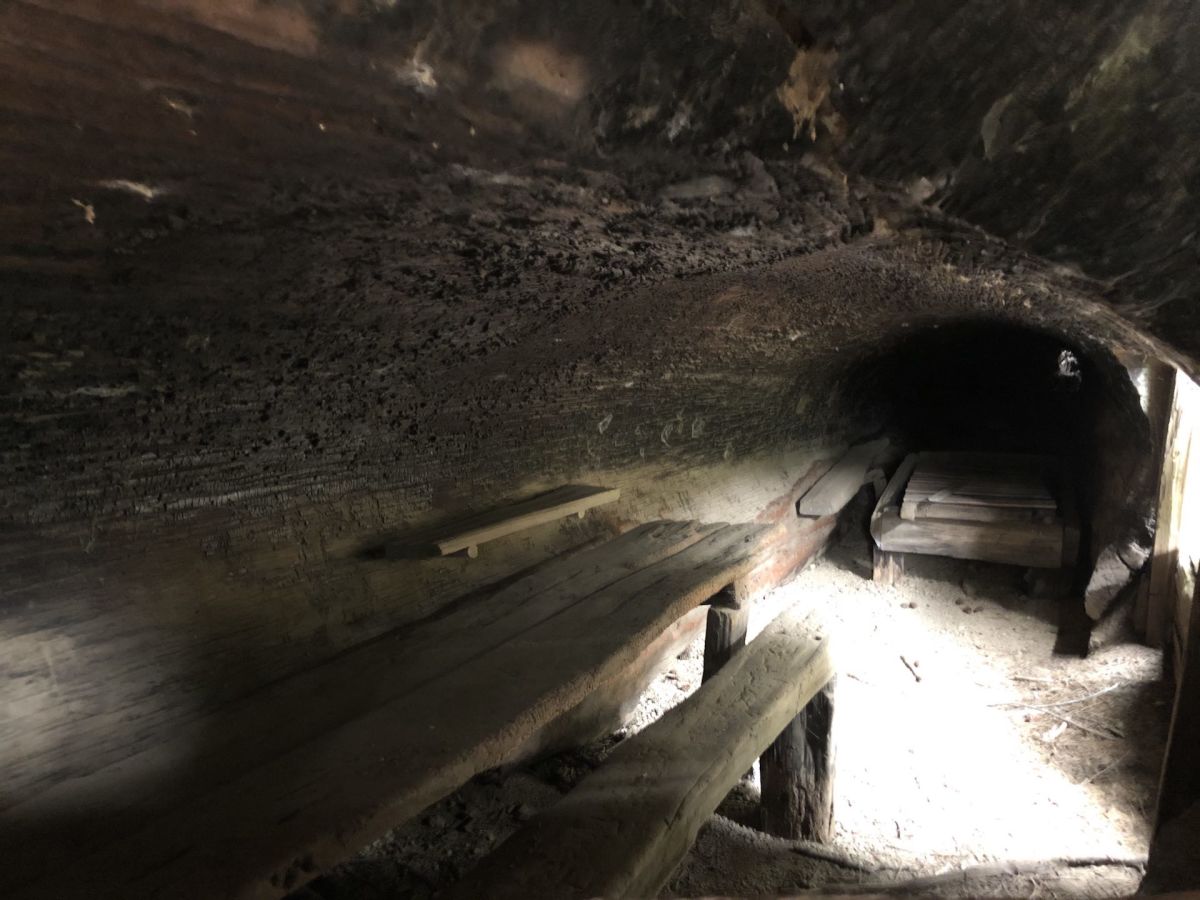
Descending past other mask-wearing climbers, we then head to Crescent Meadow, coined “Jewel of the Sierra” by Muir. There, we stroll beneath towering sequoias, including the photogenic Parker grove, while taking in such sights as Chimney Tree and Tharp’s log, named for a rancher in the 1860s who turned a fallen tree into his makeshift cabin.
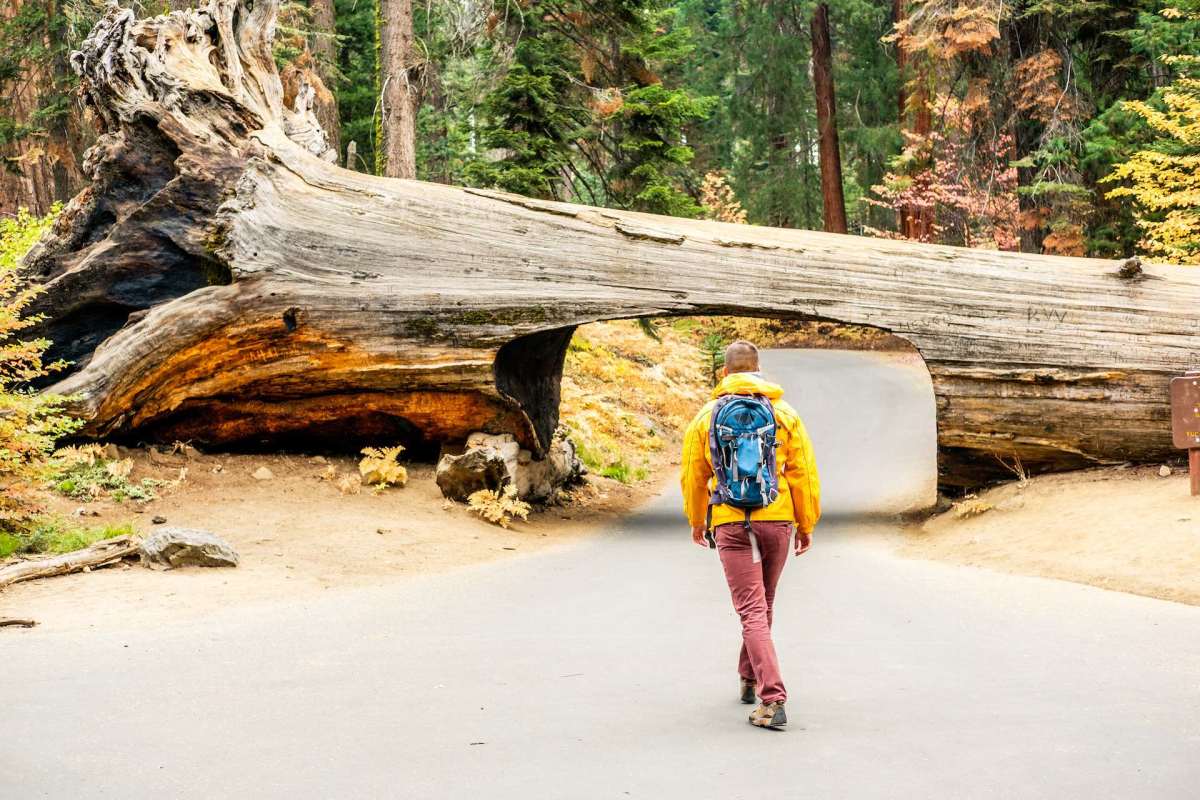
Afterwards, we drive through the ubiquitous “Tunnel Log,” which fits our Pilot with more room to spare than our garage, and marvel at the “Auto Log,” where a historic lodge photo shows a string of 1930s automobiles parked atop. Heading home, we swing by the Big Tree Loop, visiting such arbor monstrosities as Ed By Ned and Giant Forest grove.
That night at the dinner counter, Jake, a former swiftwater rescue expert now in his second year at the lodge, says this year, like our hike, has had its up and downs.
“It’s been a weird year,” he says, serving up lamb shank with mashed potatoes. “Usually, I hear 20 to 30 different languages here. Now, it’s nothing, due to the travel restrictions. I bet almost everyone here now is from L.A., looking to just get away. But the smoke has put a damper on that as well.” It’s everyone who’s not here’s loss, I think, as we toast the day’s trees with Sierra Pale Ale.
On our last day, smoke blanketing the valley cuts our trip up Kings Canyon short. No matter. We veer instead to the General Grant tree, the third largest in the world. With a 40-foot diameter—the trees get wider with age, just as we do—it’s also the widest; it could hold 37 million ping pong balls and takes 20 people linking hands—er, touching knuckles—to reach around. And that would be something Mr. Muir would appreciate.
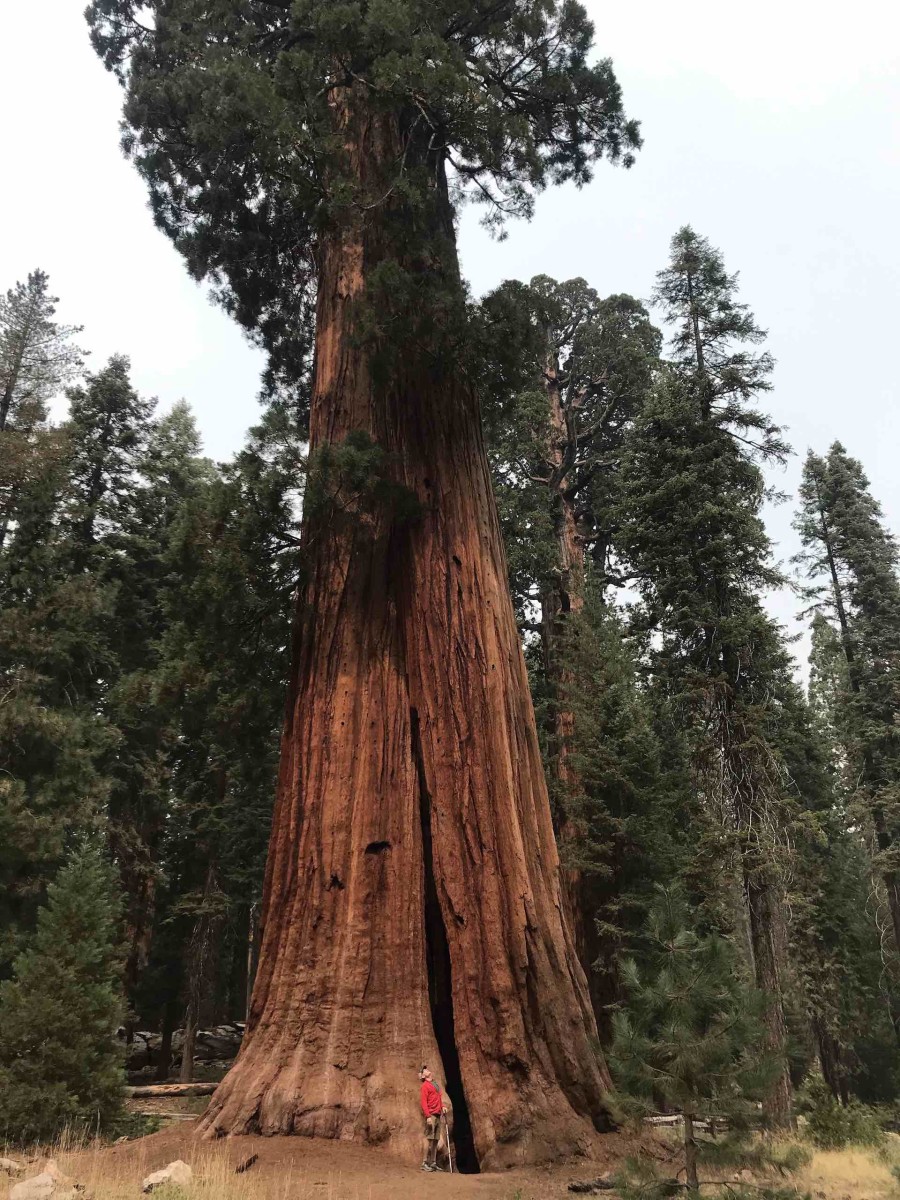
Info: visitsequoia.com
from Men's Journal https://ift.tt/3ez8KsJ
via IFTTT











0 comments:
Post a Comment